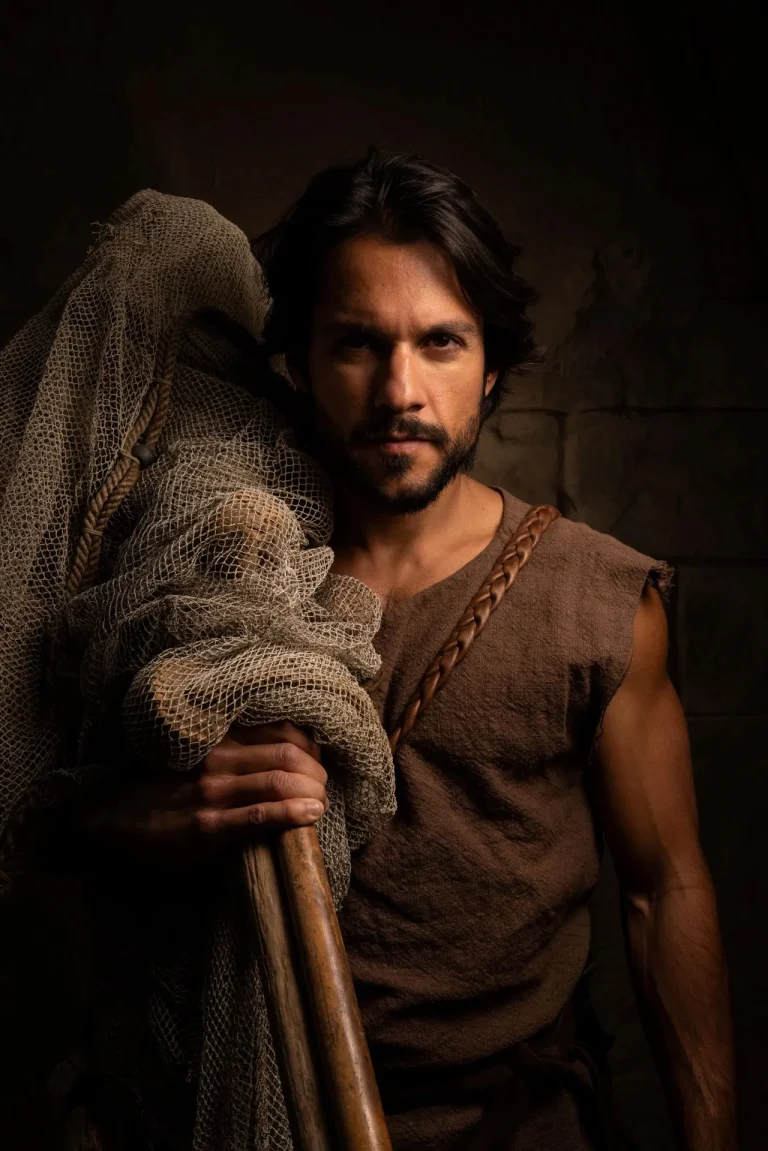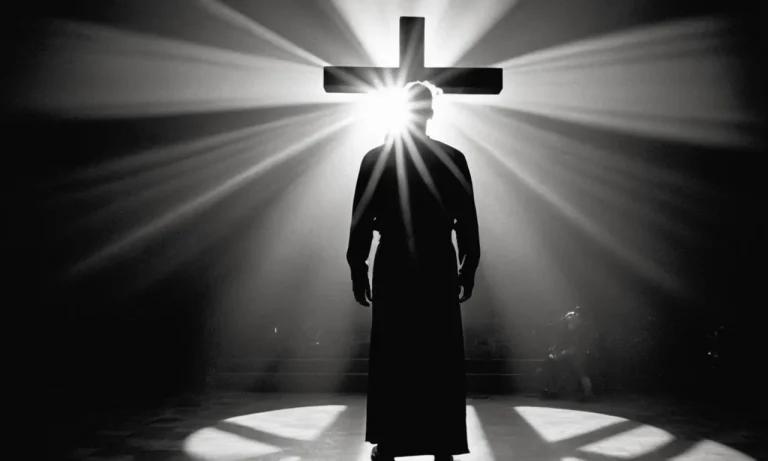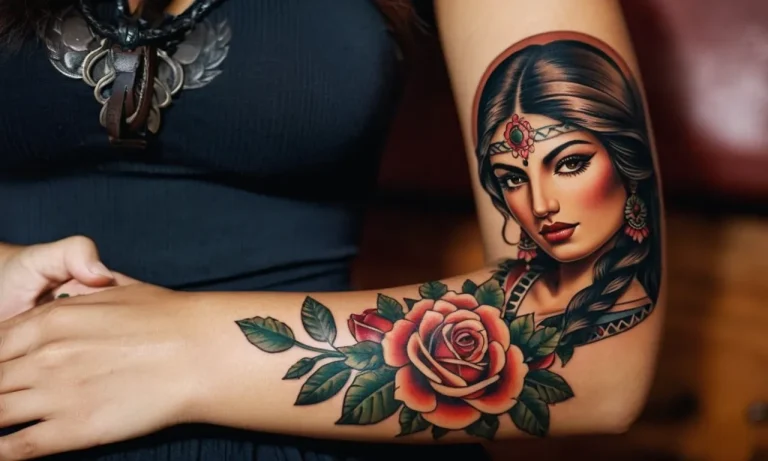What Does God Wear? A Divine Wardrobe Profile
For millennia humans have pondered what God wears, if anything at all. Does the divine creator of the universe strut around heaven in a finely tailored suit or flowing robes? Or is God more of a ‘birthday suit’ type, unencumbered by the trappings of fabric and fashion?
In this article we’ll explore religious texts, art, and scholarly thought on God’s potential wardrobe.
If you’re short on time, here’s the quick answer: Most major religions do not provide definitive detail on God’s attire (if any), and conceptions range from tailored suits to robes to a complete lack of clothing.
However, religious texts and artwork frequently depict God in flowing robes, likely symbolizing dignity and power rather than a literal wardrobe choice.
We’ll dig more deeply into Judeo-Christian, Islamic, Hindu, and other religious perspectives on what God might choose to wear from day to heavenly day – or if clothing even has relevance for an all-powerful being. We’ll also look at how conceptions of God’s wardrobe may have evolved across history.
Whether divine Being prefers donning an Armani or going au natural, read on for possible insights into the Almighty’s outfit of choice!
The Judeo-Christian Perspective: Flowing Robes but Likely No Literal Wardrobe
The Biblical Old Testament Origins of Divine Robes
The concept of God wearing robes dates back to the Old Testament, where God is often described as being clothed in majestic, flowing robes. For example, in the book of Daniel it states “As I looked, thrones were set in place, and the Ancient of Days took his seat.
His clothing was as white as snow; the hair of his head was white like wool” (Daniel 7:9). Here God is pictured as an august, ancient king wearing brilliant white robes. Similarly, the Psalms describe God as being “clothed with splendor and majesty” (Psalm 104:1).
While these passages employ metaphorical language and aren’t meant to be taken literally, they do associate God with royal robes to convey his glory and sovereignty.
Other Old Testament passages speak of God wrapping himself in light as with a garment (Psalm 104:2). This evokes radiance and brilliance, as opposed to material robes. So while God is portrayed as a regal figure wearing splendid raiment, this is symbolic language rather than a literal description of God’s wardrobe.
The New Testament and Jesus’ Seamless Tunic
The New Testament continues using clothing metaphors for God. Jesus speaks of the lilies of the field, saying “not even Solomon in all his glory was dressed like one of these” (Luke 12:27). Comparing the flowers’ beauty to Solomon’s splendorous robes implies God’s creative handiwork surpasses earthly finery.
Revelation 19:13 describes Christ wearing a robe dipped in blood, imagery meant to convey victorious battle, not fashion.
Interestingly, Jesus himself possessed a single tunic woven in one piece, for which soldiers cast lots at the crucifixion (John 19:23-24). This seamless garment was a real material item, yet of simple design.
Its symbolism recalls the High Priest’s sacred robes as well as alluding to Christ’s unity and indivisibility. Yet the Gospels do not suggest Jesus’ tunic reflected some heavenly prototype worn by God.
Medieval Theologians: Symbolic Robes But No Definitive Attire
In the Middle Ages, theologians explored the idea of God’s clothing as symbolic rather than literal. The 12th century abbot Anselm of Canterbury wrote that “Whatever we say of God…is not to be taken in a material sense, but is to be transformed into spiritual meaning.”
Anthropomorphic metaphors serve to instruct human minds, not define the divine essence. Thomas Aquinas similarly viewed God’s attributes like robe-wearing as allegorical, not physical descriptions.
Mainstream Christian theology has thus shied away from literalizing the Biblical passages about God’s robes into some actual wardrobe. As the biblical scholar John Gill commented regarding Psalm 104:1-2, “Not that God is clothed with clothes, for he is a spirit; but to express the glory and majesty, the power and authority, and the truth and faithfulness of God.”
So while artistic depictions sometimes show God in flowing raiment, theologically this remains symbolic, not sartorial.
Islam’s Conception: Royal Robes Denoting Majesty
The Quran and Hadith Lack Specifics on Allah’s Dress
The Quran and Hadith, the main sacred texts in Islam, do not provide detailed descriptions of what Allah wears. However, there are a few references to the majesty and nobility of Allah’s appearance:
- Surah Ar-Rahman in the Quran states that Allah is “Lord of the Throne of Glory.” This evokes an image of Allah seated on a magnificent throne, denoting his status and authority.
- A hadith states that on the Day of Judgement, Allah will appear to people “in a form other than His own.” This suggests Allah has a glorious divine form that is beyond human conception.
- Other hadith exalt Allah as the “Lord of Grandeur and Bounty,” indicating that he would be dressed in a fashion suiting his supreme rank.
However, the holy texts do not provide explicit descriptions of Allah’s attire. They emphasize his unimaginable divinity and majesty more than physical depictions.
Symbolic Green and White Robes in Art and Literature
In Islamic art and literature, Allah is sometimes depicted wearing green and white robes:
- Green symbolizes nature, paradise, and eternal life, representing Allah’s role as the supreme creator and sustainer.
- White represents light, purity, and peace, denoting Allah’s attributes of perfection, sincerity, and clarity.
A 14th century epic poem by Sufi poet Rumi describes Allah dressed splendidly in green silk robes embroidered with gold and silver threads. The wealthy fabrics indicate Allah’s boundless provisions for humankind.
Some Mughal era miniatures show Allah enthroned against heavenly green drapes wearing white robes, surrounded by angels and celestial beings. The art emphasizes Allah’s divine transcendence.
While these are symbolic depictions, they capture Allah’s nobility, grace, and nurture through color symbolism in Islamic culture.
Hinduism’s Depictions: Simplicity and Tigerskins
Varied Portrayals of Deities’ Divine Dress
The gods and goddesses of Hinduism are often depicted in intricate clothing and lavish jewelry. However, there are also more simple and symbolic depictions of divine dress in Hindu iconography. For example, the love god Kamadeva is frequently shown nearly naked, symbolizing desire and passion.
The warrior goddess Durga may wear armor and carry weapons representing her fierce nature. Lakshmi, the goddess of prosperity, is adorned with gold and precious gems. Yet the gods are also shown wearing very plain robes or even animal skins at times, representing asceticism and renunciation of materialism.
Shiva’s Tiger Hide and Mount Kailash Snow
Lord Shiva, the great ascetic, often wears a simple loincloth and little else. According to myths, he killed a demon and skinned it to make his tiger hide robe. This symbolizes his conquest over evil. Shiva also covers himself in the white ash of cremation grounds where he meditates, and he wears a garland of skulls.
His abode is icy Mount Kailash, where he sits in deep meditation clad only in his tiger skin against the snow. This represents his rejection of comfort and devotion to spiritual enlightenment.
Vishnu’s Simplicity…and Multiple Arms
Lord Vishnu, the preserver god, is also often depicted wearing very plain clothing. As Rama, he lived as an ascetic exile in the forest. As Krishna the cowherd, he wore only a simple dhoti loincloth. Vishnu is said to have four arms, representing his omnipresence and ability to multitask in preserving cosmic order.
Yet his clothing remains simple, symbolizing Vishnu’s lack of ego and material attachments. However, Vishnu’s incarnations as Rama and Krishna are also depicted in royal dress at times, particularly Krishna as the kingly charioteer advising Arjuna in the Bhagavad Gita.
Across Faiths, Evolving Perspectives on Holy Fashion
Fashion and faith have always been intertwined. For centuries, religious leaders have used clothing as a powerful symbol to convey spiritual meaning and identity. However, perspectives on “holy fashion” are evolving in modern times as religious traditions adapt to changing cultural norms.
One major shift is towards greater inclusiveness and diversity. For example, while the Catholic Church maintains strict vestment guidelines, Pope Francis made headlines by shunning the elaborate papal regalia in favor of simpler garb.
Some Protestant churches are rethinking traditional gendered dress codes as views on gender identity progress. Even ultra-Orthodox Jewish communities are incrementally embracing more modern styles amidst tensions with tradition.
Another noticeable trend is heightened emphasis on modesty and piety over opulence and social rank. Prosperity gospel preachers flaunting designer suits raise eyebrows today, versus the ostentatious clerical fashion of medieval Europe.
In a similar vein, nouveau riche Muslims sometimes sport lavish clothes for Hajj pilgrimage, spurring critiques about distraction from inner spiritual focus.
Furthermore, youth culture is asserting greater self-expression. Some young Muslim women stylishly pair hijabs with jeans or adapt abayas with vibrant colors and patterns. Young Sikhs creatively accessorize turbans, defying past conformity.
However, elder generations often perceive these fashion statements as diluting religious ideals.
Adapting doctrinal garb to modern tastes while preserving tradition remains controversial across faiths. But the shifting social and cultural landscape will likely continue to reshape notions around holy fashion in the 21st century and beyond.
Key Trends
- Greater inclusiveness and diversity in clerical and religious fashion
- Shift from opulent to more modest and pious styles
- Youth culture embracing more self-expression and customization
- Tensions between preserving tradition and adapting to changing cultural norms
God’s Dress Code: Scholarly Speculation Through the Ages
Early Searching for What God Might Wear
Since the dawn of civilization, humans have wondered what kind of attire, if any, God might don. Early hunter-gatherers likely envisioned a powerful deity dressed in animal skins or foliage from the lush forests where they foraged. Ancient agrarian societies across the globe pictured their gods and goddesses clothed in robes and dresses made from harvested linens and silks.
The ancient Greeks, for example, depicted their gods wearing elaborate himation and chiton garments. Frescoes and mosaics show Zeus, Poseidon, and Apollo in flowing robes, while goddesses like Athena and Aphrodite wore decorative peplos and chitons.
These clothed depictions reveal how early societies projected their own textile materials and garment-production capabilities onto their deities.
Enlightenment Deism: Does God Even Need Clothes?
During the 17th and 18th century Enlightenment period, Deist philosophers conception of God shifted radically. Rather than an anthropomorphic deity requiring food, clothing, or shelter, Deists like Thomas Paine saw God as the detached creator of natural laws that sustained the universe.
If God does not have a physical form, Deists argued, then conjecturing about divine dress is rather absurd. As Voltaire quipped, “God created man in His image and man has returned the favor.” Deists believed such projections said more about human vanity than God’s nature.
In this view, clothing serves only mortal functions like warmth, decorum, status – things an infinite spirit would have no use for.
However, more traditional religious thinkers pushed back on the Deist view of an aloof God. In the 19th century, Pope Pius IX’s Syllabus of Errors condemned the Deist notion that “God is essentially the same way in all religions and cannot dictate religious revelation.”
To Catholics and most Protestants alike, God remained engaged in human affairs and self-revealed in the man Jesus Christ. And the incarnate Son of God quite definitively wore common clothes.
Conclusion
Whether robed, suited, or in the nude, conceptions of what God wears have clearly evolved across faith traditions and history. Early on, divine dress served symbolic purposes in conveying dignity and majesty. The Enlightenment bred more skepticism around whether God would even need material covers.
And postmodern interpretation allows room for greater fluidity in envisioning the Almighty’s self-expression.
While most religions avoid definitive declarations on God’s wardrobe, the divine mystery leaves space for creative imagining. Flowing robes prevailing in artistic depictions likely represent symbolic ideals rather than endorse a particular outfit.
And arguments that clothing is unnecessary for a supreme Being carry real weight. But the choice may ultimately come down to…whatever God wants to wear!








